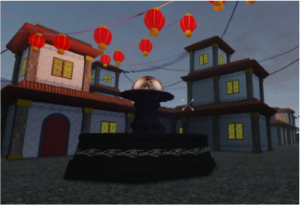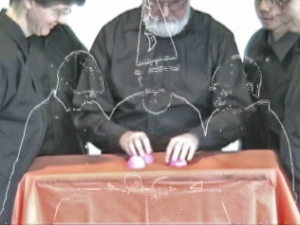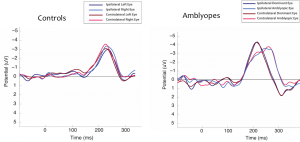Research Topics
Can we use video games to improve vision and attention in children?
Video games have shown to boost a wide range of visual and cognitive functions in individuals that play them regularly. Previous work in Dennis Levi’s lab at UC Berkeley has shown that action video games show promise as a new form of treatment for amblyopia, a developmental visual impairment. I’m working to test a new, child-friendly game on a younger population. I’m also designing and conducting studies that measure improvements in visual attention related to the training.
Can we process extra information provided by an augmented reality display?
Viewing conditions in which extra information is layered upon an existing scene creates unique new challenges to our ability to extract essential information. Here, I used Adobe Premiere Pro to generate overlapping video clips with the same scene at two scales, simulating the view through an augmented reality display in development. In some of the clips, unexpected events were only visible in one of the two scales, and the ability to detect these was measured in 20 normally sighted participants. Our results suggest that viewers are only able to detect these unusual events about half of the time.
How can we improve a perceptual-motor training program for stroke and TBI patients?
For this project, I tested out early prototypes of a novel training paradigm on patients with spatial distortions due to brain injury. Through several iterations of usability testing, my feedback was used to design new functions, improve the interface, and make the training more effective. I presented the results from the pilot phase of this study at an international vision conference.
Can we find neural correlates of a visual attention deficit in individuals with impaired vision?
In this study, I am using electrical measurements on the scalp (EEG) to investigate how people allocate attention to different areas of a screen after an auditory cue. I am specifically interested in whether there is a decreased ability when viewing through the amblyopic eye, which received impoverished input during development. If this is the case, it provides evidence that visual impairment during development can disrupt higher level cognitive functions.
What happens when different images are presented to each eye? What is the effect of surround scene context?
In most cases, our visual percept is constructed of two highly congruent images. A slight difference in perspective or binocular disparity between the two can be used to create a percept of a three-dimensional world. In more artificial situations, or cases where the view to one of the eyes is obstructed, our brain alternates between the two images, a phenomenon referred to as binocular rivalry. In this experiment, I investigated what happens when the two eyes see different things in central vision, but the peripheral scene for the two eyes is the same.
Is our willingness to tolerate blur related to certain personality traits?
To investigate a potential relationship between blur tolerance and personality, participants filled out an extensive personality survey and responded when letters became objectionably blurry in several viewing conditions. Findings suggest that individuals that are more organized and self-confident were less likely to tolerate blur.
Usability and Design Projects
Formative Research for a California State Park iPad Application (Spring 2013)
To help improve the park visit experience, we wanted to understand what types of information people want when they visit parks. We were also curious about how technology is used in parks, to gauge whether an iPad app would be feasible. To answer these questions, we conducted a series of focus groups, observations, and a diary study. Our findings were presented to the class and written into a final report.
Video clip of myself (off-screen experimenter) leading a usability test of a similar iPad app: https://www.youtube.com/watch?v=1sGh__xDteo
BotsnPans: the design and development of a browser-based cooking game (2012)
For this group project we cycled through an iterative design process to create a casual game. We started by conducting observations and contextual inquiries of “casual gamers” to develop personas. We then progressed through several prototyping steps ranging from low-fidelity (paper), through mid-level (Balsamiq), and high-fidelity development. I led the project’s research efforts, where we interviewed several individuals to explore what makes a game fun, and what makes it challenging. We incorporated these ideas into our evolving prototypes, and then conducted usability testing of our final product. The findings were presented to the class and written up as a final report.







